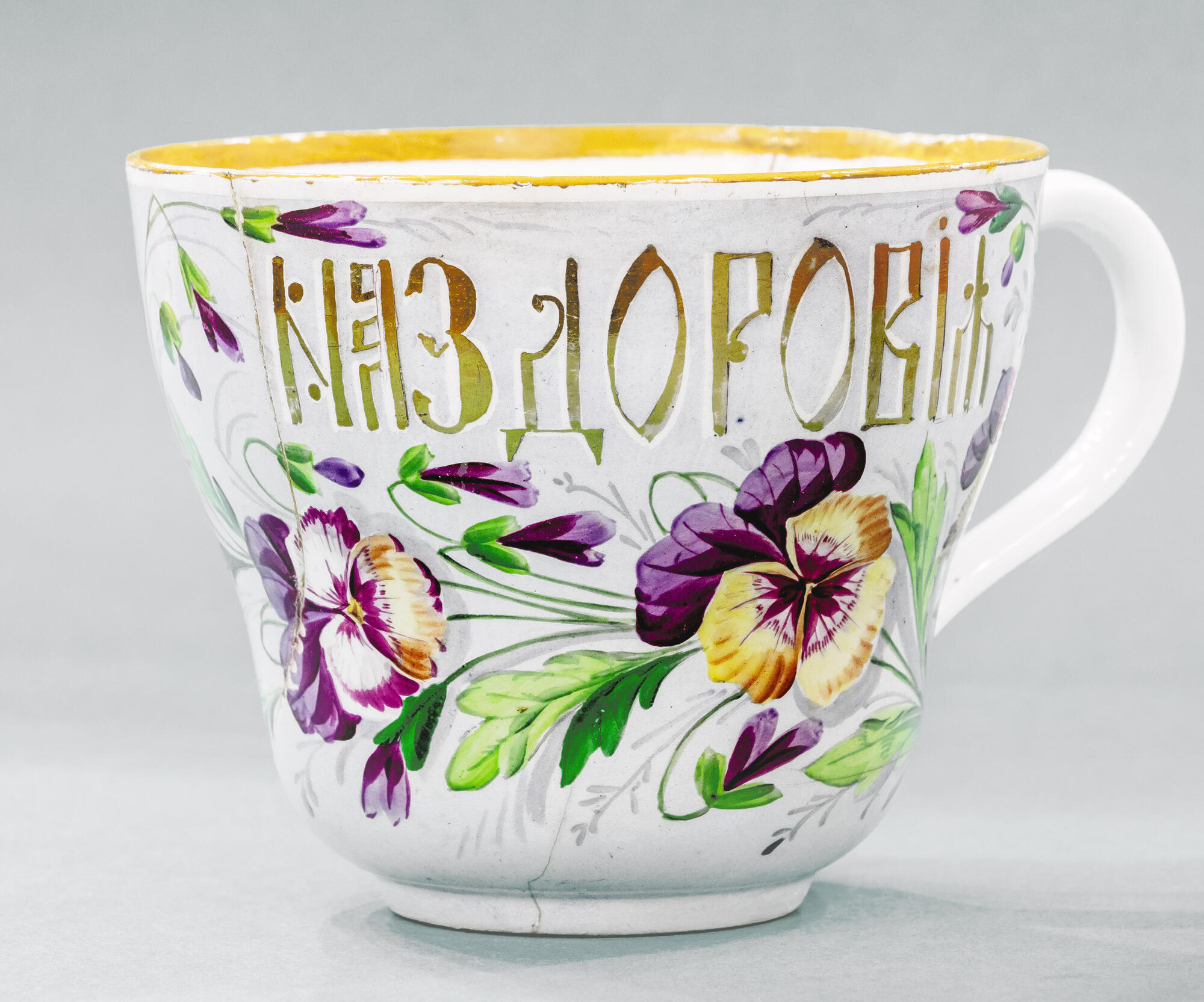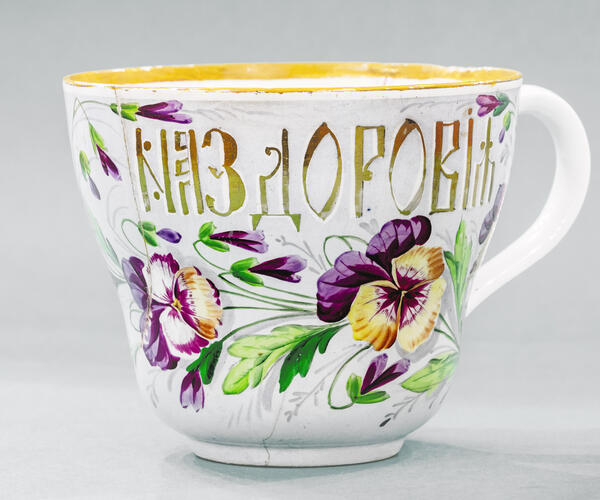This bowl with floral patterns and a gilded 'For Good Health' inscription was made by M. S. Kuznetsov’s Partnership For Production of Porcelain, Dutchware, and Majolica Items. It was one of the largest porcelain and Dutchware manufacturing facilities in the Russian Empire during the late 19th–early 20th centuries.
The dishes manufactured at Kuznetsov’s factories reflect numerous painting and shape traditions accumulated over the two-centuries-long history of porcelain in Russia. By 1898, Kuznetsov’s Partnership grew to become the largest in Europe, and in the early 20th century, the factories of the Partnership produced about two-thirds of all Russian porcelain. In 1902, Kuznetsov was awarded the title of the Purveyor to His Imperial Majesty. The factories manufactured tableware, vases, interior and facade decorations, Dutch tiles, and oven details.
Russian people fell in love with tea they had discovered in the East. The introduction of tea to the high society jump-started the formation of tea etiquette. Rich families invited guests to a cup of tea served in porcelain cups. Apart from porcelain, there were always a shiny samovar and sweet treats on the table. A tea party filled with heartfelt discussions could last for hours. It was not allowed to smoke, sing, laugh, or discuss something loudly at the tea table. Ambiguous topics were also banned to make sure everything was orderly and calm. The matron of the house served tea to the guests. The most honorable place at the table was near the icons. It was reserved for the hosts or the most respected guests. When the hostess passed tea to a guest, she said “For good health, ” and the guests responded with a thank you.
Kuznetsov’s Partnership was established in 1887 by the Russian industrialist and businessman Matvey SIdorovich Kuznetsov. With time, the Partnership comprised the largest Russian tableware factories: the Riga Porcelain and Dutchware Factory, Dulevo Porcelain Factory, and Franz Gardner’s Porcelain Factory in Verbilk of the Moscow Governorate (est. in 1766, purchased by Kuznetsov in 1891). The Partnership also included the Budyansk Porcelain Factory and the porcelain factory in Slavyansk, Kharkov Governorate, factories in the Yaroslavl, Tver, and Kaluga Governorates.
The dishes manufactured at Kuznetsov’s factories reflect numerous painting and shape traditions accumulated over the two-centuries-long history of porcelain in Russia. By 1898, Kuznetsov’s Partnership grew to become the largest in Europe, and in the early 20th century, the factories of the Partnership produced about two-thirds of all Russian porcelain. In 1902, Kuznetsov was awarded the title of the Purveyor to His Imperial Majesty. The factories manufactured tableware, vases, interior and facade decorations, Dutch tiles, and oven details.
Russian people fell in love with tea they had discovered in the East. The introduction of tea to the high society jump-started the formation of tea etiquette. Rich families invited guests to a cup of tea served in porcelain cups. Apart from porcelain, there were always a shiny samovar and sweet treats on the table. A tea party filled with heartfelt discussions could last for hours. It was not allowed to smoke, sing, laugh, or discuss something loudly at the tea table. Ambiguous topics were also banned to make sure everything was orderly and calm. The matron of the house served tea to the guests. The most honorable place at the table was near the icons. It was reserved for the hosts or the most respected guests. When the hostess passed tea to a guest, she said “For good health, ” and the guests responded with a thank you.



